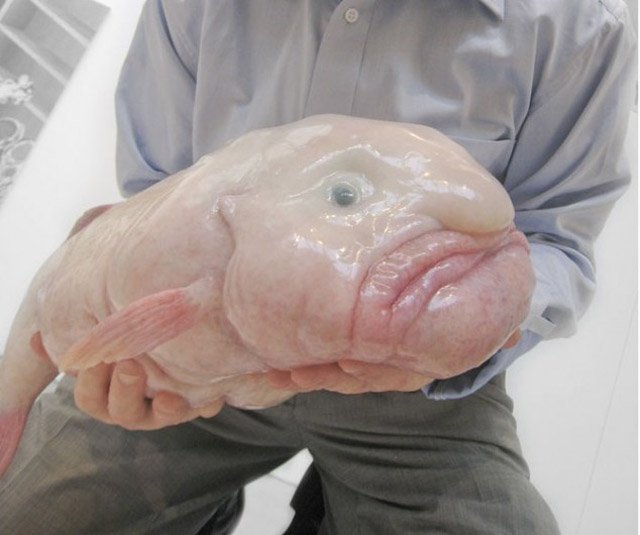
Blobfish has won a public vote to become the official mascot of the Ugly Animal Preservation Society.
This gives the fish the unofficial title of world’s ugliest animal.
The Ugly Animal Preservation Society began as a science-themed comedy night and devised its mascot campaign to draw attention to “aesthetically challenged” threatened species.
The winner was announced at the British Science Festival in Newcastle.
The blobfish tops a list that includes the huge-nosed proboscis monkey, the similarly afflicted pig-nosed turtle, an amphibian affectionately known as a “scrotum frog” and pubic lice.
Biologist and TV presenter Simon Watt, president of the Ugly Animal Preservation Society, said he hoped the campaign would draw attention to the threats facing these weird and wonderful creatures.
Simon Watt said he hoped the vote would also bring a lighter side to conservation.
“It’s the most depressing type of science to be involved with,” he said.
“It’s basically working out: What died today?”

For this campaign, Simon Watt worked with comedians, each of whom created a campaign message on YouTube for their chosen creature. The society asked the public to vote for their favorite.
The blobfish eventually won by almost 10,000 votes.
The bizarre creature lives off the coast of south-eastern Australia and Tasmania, at depths of between 600 and 1,200 m, where atmospheric pressure is several dozen times higher than at sea level.
Blobfish’s gelatinous body is just slightly more dense than water, and it spends its life “bobbing around” in the depths.
It feeds on crabs and lobsters and so suffers a significant threat from fishing trawlers. Although it is inedible itself, it gets caught up in the nets.
Other animals on the shortlist face similar threats to their habitats and Simon Watt hopes that this campaign will highlight the fact that conservation should focus on the protection of habitats rather than specific species.
The remaining animals in the top five were:
- The kakapo: The world’s only flightless parrot. This heavy bird evolved in an island “bubble”, with no natural predators. But its New Zealand home now has many mammals, including humans, that have decimated the population of the famously curious kakapo. According to the International Union for Conservation of Nature, there were just 126 of the birds remaining in the wild in early 2012.
- The axolotl: This is the salamander that never grows up. The amphibian spends its entire life underwater, unlike other salamanders, which develop the ability to breathe out of the water when they mature. The axolotl’s perpetual state of larval development means that it is able to re-grow lost limbs. It also means the creatures are of huge interest to scientists; the salamanders are studied for their apparent natural resistance to ageing and cancer. They live only in a small cluster of lakes in Mexico that are now becoming dangerously polluted.
- The Titicaca water frog: This amphibian lives only in Lake Titicaca in the Andes. It has evolved a reduced lung capacity, so its many skin folds help it to breathe. According to some researchers’ accounts, the frogs do “press-ups” at the bottom of the lake to create disturbances in the water that increase oxygen flow.
- The proboscis monkey: As well as a very oversized nose, this primate also has a rotund appearance, which is a by-product of its diet of unripe fruit. Only the males have such large noses and, although they might look odd to us, it is thought that they make the primates more attractive to potential mates.
[youtube qQRV5d8duwg]